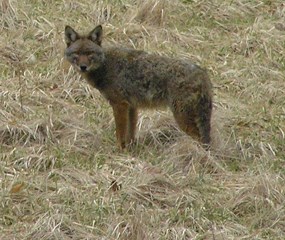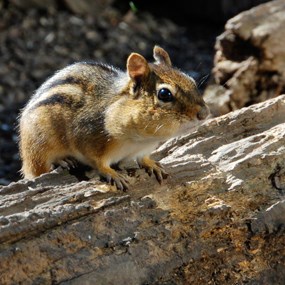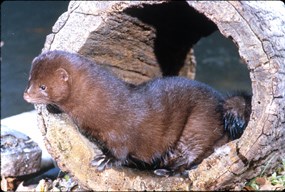
Courtesy MPSSC The expansive green space of Cuyahoga Valley National Park provides a refuge for many types of mammals. Forty-one mammal species have been documented in the park. Coyotes and FoxesCoyotes returned naturally to the valley in the 1980s after a long absence. They are now the dominant predator in several park ecosystems. The abundance of forest edge habitat along open meadows and fields provides coyotes with plenty of food. Here they find fruits, nuts, small mammals, and other food sources. Coyotes are present in all 88 counties in Ohio. No one is sure how many coyotes live in the Cuyahoga Valley, but recent surveys estimate 100 to 150. 
© Neil Evans Small MammalsSmall mammals make up the majority of the mammal population in Cuyahoga Valley. These animals can be found through out the park's forests, fields, and wetlands. They include mice, moles, voles, shrews, chipmunks, and squirrels. If you hear rustling leaves while hiking through the woods, one of these small critters is usually the culprit. A small mammal inventory showed that white-footed mice and short-tailed shrews are two of the most abundant animals in the park. BatsNine species of bats have been found in the park, three of which were first identified in a 2002 bat survey. The Indiana Bat, a federally endangered species, found in the 2002 survey was not identified in the 2022 survey. Deer and Other MammalsAlong roadsides, white-tailed deer and woodchucks graze on grasses and forbs in open fields. At night, you may catch a glimpse of raccoons or opossums scurrying across the road, in a hurry to find food or shelter before the day begins. 
NPS Collection Many of the park's wetlands are filled with beaver and muskrat activity. Where a tree once stood, there may be nothing left but a stump and woodchips, signs of the beaver's need for food, shelter, or a dam. Mink, in search of fish, snakes, or other foods, often visit wetlands or streams are occasionally seen. River otter sightings usually occur in the very early morning when there is minimal human disturbance. In general, these mammals are also very active at dusk and throughout the night feeding on fish and at times, other aquatic animals. Select a Park:Select a Species Category (optional):
Search results will be displayed here.
|
Last updated: May 2, 2024
